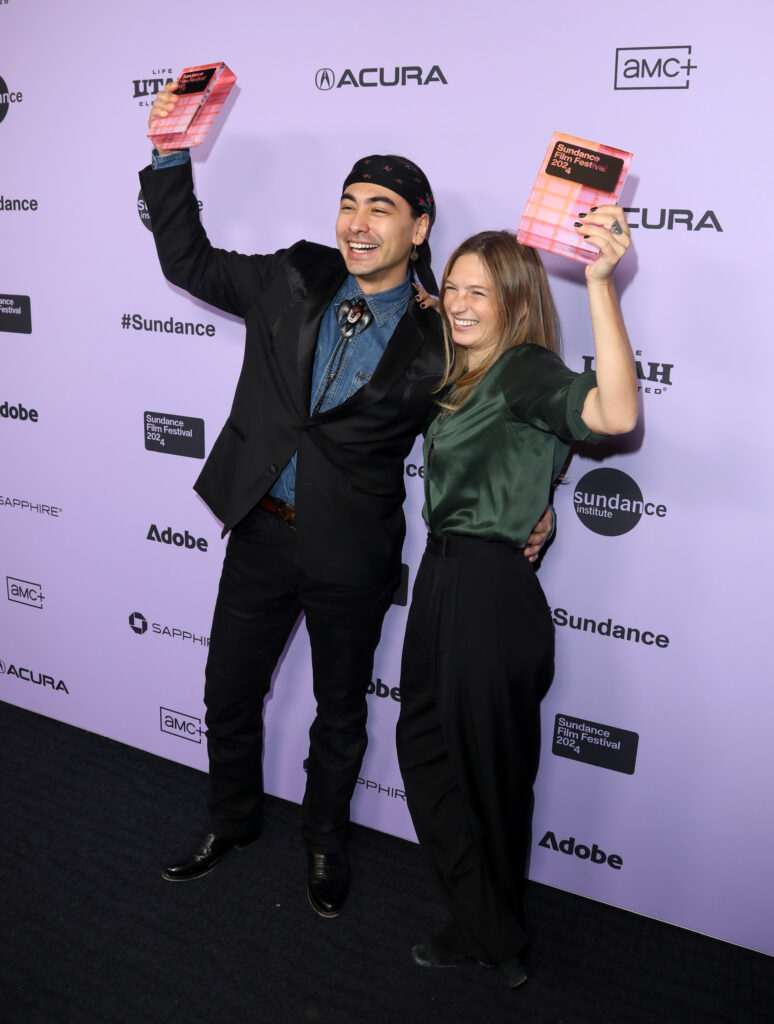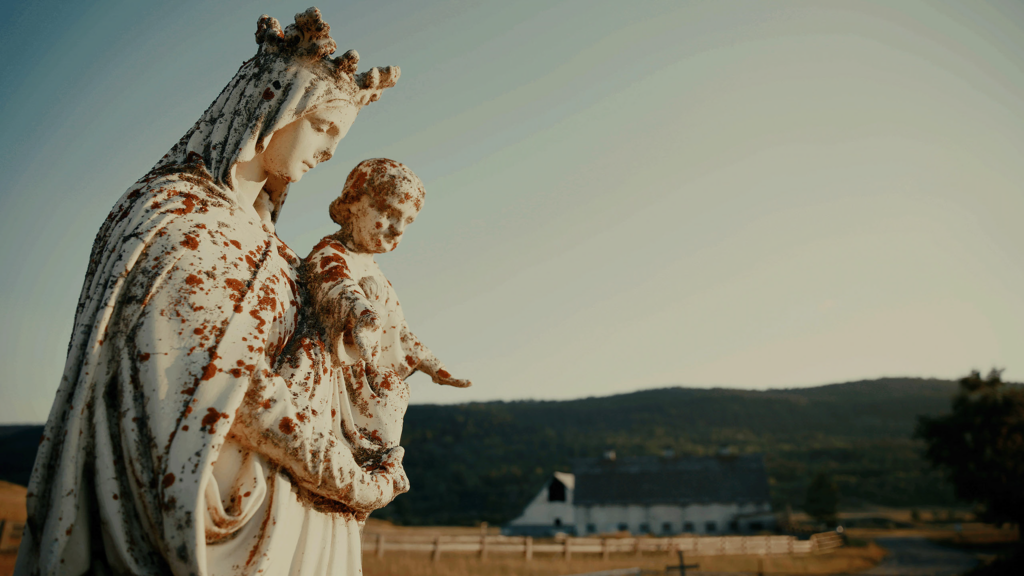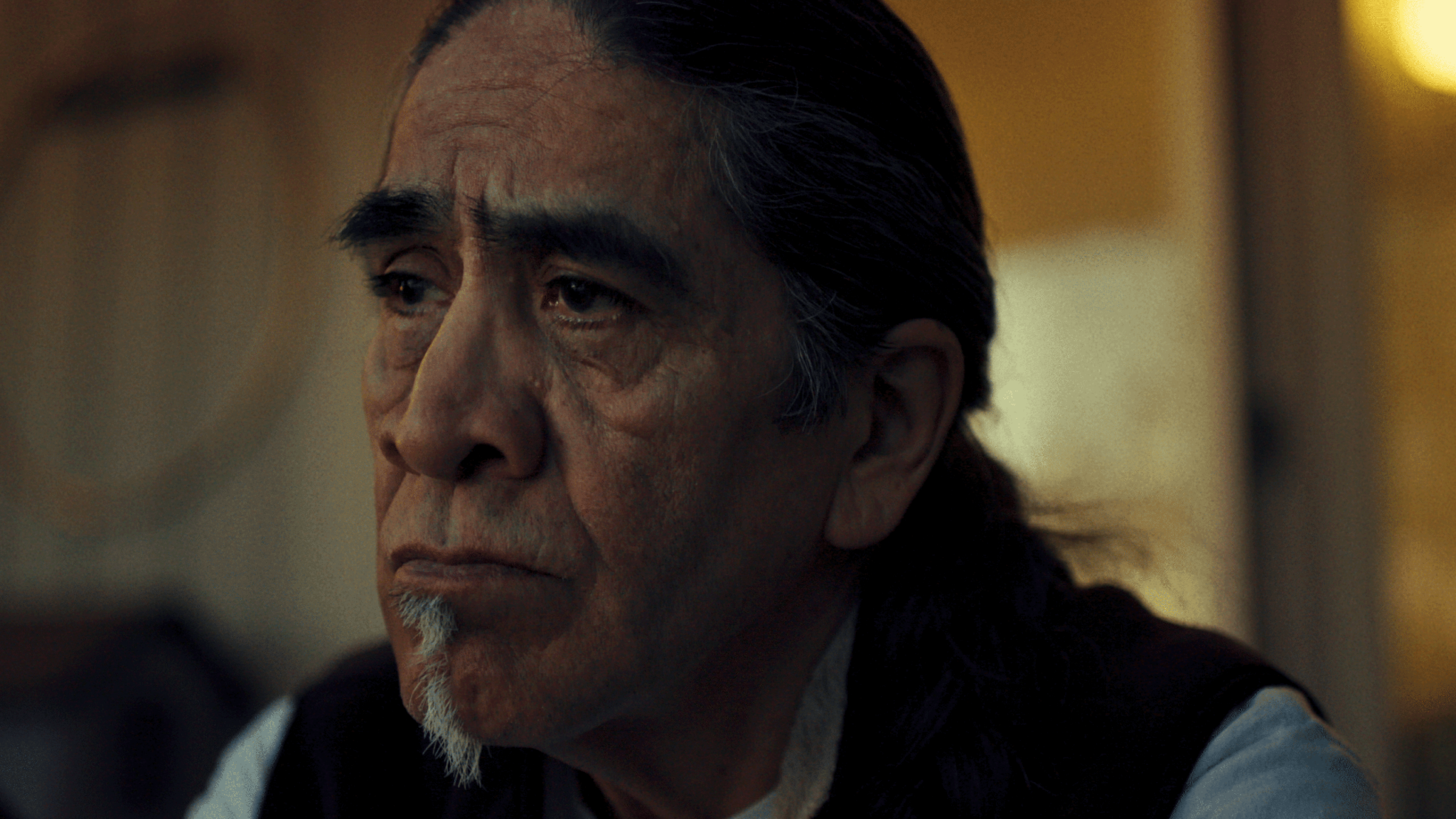By Lucy Spicer
One of the most exciting things about the Sundance Film Festival is having a front-row seat for the bright future of independent filmmaking. While we can learn a lot about the filmmakers from the 2024 Sundance Film Festival through the art that these storytellers share with us, there’s always more we can learn about them as people. This year, we decided to get to the bottom of those artistic wells with our ongoing series: Give Me the Backstory!
In 2021, news stories about the presence of suspected children’s graves on Canadian Indian residential school property made international headlines and caught the attention of documentary filmmaker Emily Kassie. “I felt a pull in my gut,” recalls Kassie. “I had reported on mass atrocities around the world but had never turned my lens on my own country.” Kassie began looking into First Nations who were in the process of getting access to other possible grave sites. “I reached out to my old friend and colleague Julian (we sat next to each other at our first reporting jobs). What I didn’t know is the search I secured access to following at St. Joseph’s Mission was the school where Julian’s family attended and where his father was born.”
Kassie’s collaboration with Julian Brave NoiseCat would bring about Sugarcane, a documentary that reckons with the intergenerational trauma caused by the residential school system, a system rife with abuse that separated Indigenous children from their families and their cultures. The film premiered in the U.S. Documentary Competition at the 2024 Sundance Film Festival, where Kassie and NoiseCat would go on to win the U.S. Documentary Directing Award.
“I’m not sure I would have ever made a movie if Emily hadn’t called me after news of a discovery of potential graves at the Kamloops Indian Residential School broke,” says writer and activist — and now filmmaker — NoiseCat. “I’m so grateful she did because this film changed my life.”
Get more insight into the co-directors below, including why filmmaking is important to them and the reason it’s vital to get projects like Sugarcane out into the world now.
What was the biggest inspiration behind the film?
Julian Brave NoiseCat: I’d long heard that my dad was born at St. Joseph’s Mission, the Indian residential school where my family was sent south of Williams Lake, British Columbia, Canada. But I didn’t know the story because my family didn’t talk about his birth or the schools. But then, ground-penetrating radar detected graves suspected to be missing children beneath the apple orchard at the Kamloops Indian Residential School. And people started remembering and talking.
Describe who you want Sugarcane to reach.
NoiseCat: We want Sugarcane to be seen far and wide — by residential school survivors and their descendants, and also by people who have never even heard of the Indian residential and boarding school system. Our film is a western grappling with universal questions about trauma, family, and community set in a specific time and place: the Sugarcane Indian Reserve during an investigation into abuse and missing children at the nearby St. Joseph’s Mission. It hits hard, like a bull at a rodeo, but it’s also, surprisingly, fun.
Kassie: Our film deals with universal themes of family, childhood, and trauma. It deals with colonial legacies and reconciling national and personal pain. It should be seen by everyone.
Why does this story need to be told now?
Kassie: Canada has begun to reckon with its brutal colonial history and the legacy of the 135 residential schools. However, the Indian boarding school system in the United States, which had more than 400 government-funded schools, has not had the same national or international attention. We want our film to help catalyze a national dialogue and extend the work that Interior Secretary Deb Haaland, the first Native American cabinet secretary, has begun. Similar systems also existed in New Zealand, Australia, Scandinavia, Russia, and more. We hope many more stories are told.
How do you want people to feel after they see your film?
NoiseCat: This history is not past. It’s present. Indian residential and boarding schools had a death toll when they were open. They still do now, even after they’ve all closed. This history has been ignored far too long — by the churches and nations that perpetrated this cultural genocide, like Canada and the United States. But also by the families, like my own, who forgot and remained silent to survive.

Kassie: I hope people are furious with the government, the church, and society’s indifference. That they are struck by the outstanding courage of the film’s protagonists. That they are moved by the poetry of the world. I also hope audiences find resonance in their own lives in the themes of family, pain, and love.
Films are lasting artistic legacies; what do you want yours to say?
NoiseCat: Our film is about what happens when the world breaks open, the memories of the departed return, and the truth finally gets its day. It’s about the devastating past and present consequences of a continent-wide policy of removing Indian children from their homes and families. It’s about the hard conversations families, communities, and nations avoid but need to have. And it’s about how returning to deeply Indigenous and human connections — to family, place, community, and culture — can pull the shards of these broken worlds back together.
Tell us why and how you got into filmmaking.
Kassie: I made my first documentary when I was 14, following gay students facing discrimination in religious high schools. It was the first injustice that I witnessed up close. As a theater kid, I loved to embody the stories of characters from other worlds, but living alongside the human experience and creating art to transform perspectives was exhilarating. Since then, I’ve traversed the world making short docs and telling visual stories about people caught in unjust systems and geopolitical conflicts.
Why is filmmaking important to you? Why is it important to the world?
NoiseCat: The Indian life and world that was very nearly annihilated by colonization and those Indian schools is beautiful. It has long been pushed to the margins of American culture and society, consigned to the far side of the frontier eclipsed by the West. But it’s a deeply human life, full of love, hurt, comedy, and contradiction. It’s a good life. And though it has long been overlooked and forgotten by Hollywood and this art form, it’s also a cinematic life.
Kassie: There are very few things that can change your heart, but I believe cinema is one of them. In an oversaturated media landscape where truth is murky, documentary films can transport us and help us see.

What three things do you always have in your refrigerator?
NoiseCat: Salmon, salmon, and salmon.
Kassie: Coffee, coffee, and coffee.
One thing people don’t know about me is _______.
NoiseCat: I once bailed my dad and his long-haired chihuahua Angus out of jail in Goldfield, Nevada.
Early bird or night owl?
NoiseCat: Afternoon salmon.
Kassie: Late night edits.
Tell us about your history with Sundance Institute. When was the first time you engaged with us? Why did you want your film to premiere with us?
Kassie: Our first week of shooting we knew we were part of something special. At the end of that week, it was the last day the Sundance documentary grant application was open. We decided to apply and I cut together 20 minutes from that first week of shooting. It’s the sample we used the whole way through. We were blown away when we got the grant, and we had an unbelievable experience with the Sundance Catalyst team who helped us shape our vision. I still can’t believe we get to share the film with the Sundance audience; we are so grateful.
What’s your favorite film that has come from the Sundance Institute or Festival?
NoiseCat and Kassie: One, two, three: Hunt for the Wilderpeople!







